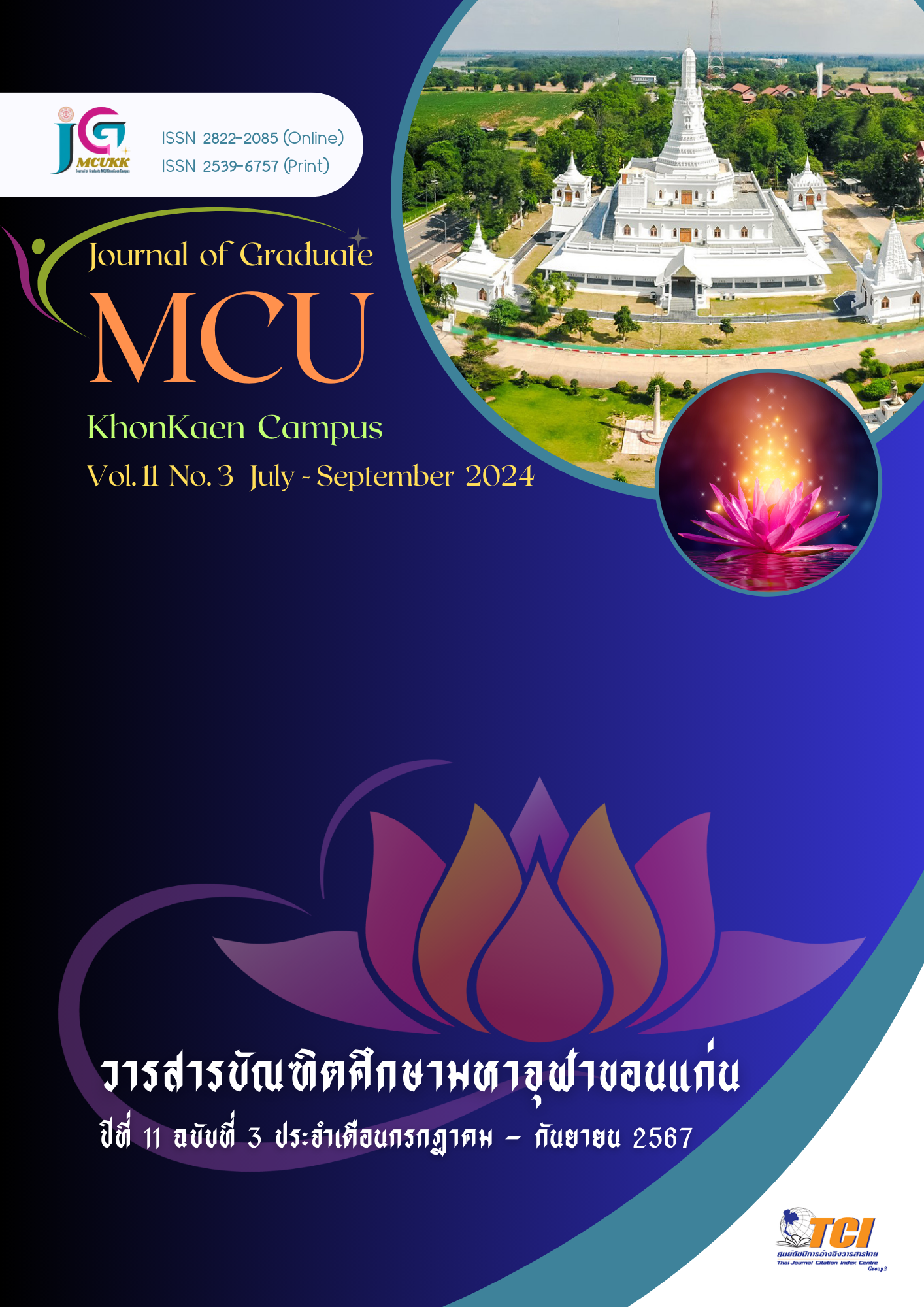The Model for Developing Digital Leadership Capabilities of Basic Education Administrators in Inspection Area 12
Main Article Content
Abstract
This research aimed to 1) study the components and conceptual framework of digital leadership of basic education administrators in Inspection Area 12 2) verify the consistency of the digital leadership model of basic education administrators in Inspection Area 12 with empirical data 3) develop a model for enhancing the digital leadership capabilities of basic education administrators in Inspection Area 12 and 4) evaluate the developed model through Explanatory Mixed Methods Research, combining both quantitative and qualitative data analysis, starting with quantitative research to identify key components, indicators, and behavioral indicators of digital leadership. The sample size was determined based on a criterion of 15 times the number of variables, following the concept of Hair et al., using multi-stage random sampling, resulting in a sample of 330 people including school directors and teachers in basic education schools in Inspection Area 12. Data collection tools included a 5-point Likert scale questionnaire, interviews, and assessments, and component analysis was performed using computer software to assess the model's appropriateness, feasibility, and utility.
The research results were as follows:
1. The components of digital leadership development for basic education
administrators consist of five main components and 16 indicators: (1) Digital Professional Development, (2) Digital Vision, (3) Digital Age Learning, (4) Digital Literacy, and (5) Digital Communication.
2. The model for measuring digital leadership development components developed by the researcher aligns with empirical data and meets all criteria (x2= 178.341, df = 99, p-value = 0.065, x2/df = 1.86, CFI = 0.947, TLI = 0.936, RMSEA = 0.049, SRMR = 0.040).
3. The digital leadership development model for basic education administrators in Inspection Area 12 includes the model name, objectives, principles/concepts, methods, expected outcomes, and conditions for success.
4. The digital leadership development model for basic education administrators in Inspection Area 12, evaluated by qualified experts, shows high levels of appropriateness, feasibility, and utility in all components.
Article Details

This work is licensed under a Creative Commons Attribution-NonCommercial-NoDerivatives 4.0 International License.
References
ชุติรัตน์ กาญจนาธงชัย. (2562). ตัวบ่งชี้ภาวะผู้นำดิจิทัลของผู้บริหารสถานศึกษา สังกัดสำนักงานคณะกรรมการการศึกษาขั้นพื้นฐาน. (ดุษฎีนิพนธ์ศึกษาศาสตรดุษฎีบัณฑิต). นครปฐม: มหาวิทยาลัยมหามกุฏราชวิทยาลัย.
ธีระ รุญเจริญ. (2554). สภาพปัญหาการบริหารและการจัดการศึกษาขั้นพ้นฐานของส่วนการศึกษาในประเทศไทย. กรุงเทพฯ: เซ๊นจูรี.
สมาน อัศวภูมิ. (2561). ทบทวนแนวคิดและวิธีวิจัยเกี่ยวกับรูปแบบและการพัฒนารูปแบบ. วารสารบริหารการศึกษาบัวบัณฑิต มหาวทยาลัยอุบลราชธานี, 8(1), 1-13.
สำนักงานวิชาการและมาตรฐานการศึกษา. (2554). รายงานด้านเศรษฐกิจ สังคม และการเมือง. กรุงเทพฯ: สำนักงานคณะกรรมการการศึกษาขั้นพื้นฐาน กระทรวงศึกษาธิการ.
อาภรณ์ ภู่วิทยพันธุ์. (2562). CFR กลไกขับเคลื่อนให้การบริหารผลงานบรรลุผลสำเร็จ. กรุงเทพฯ: เอช อาร์ เซ็นเตอร์.
International Society for Technology in Education (ISTE). (2009). National educational technology standards for administrators.
Joint Committee on Standards for Education Evaluation. (1994). The Program Evaluation Standards. (2nd ed.). California: SAGE.

